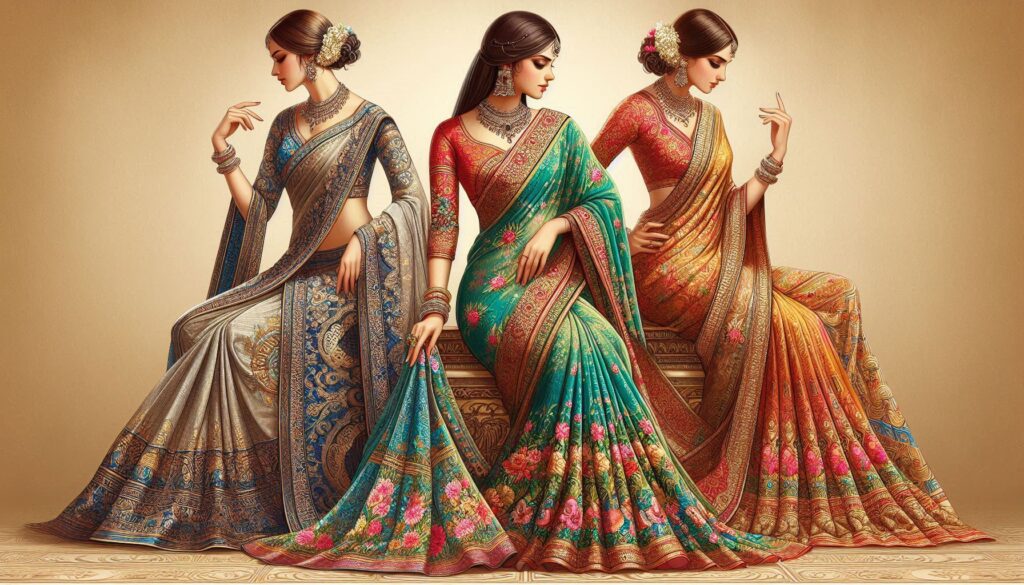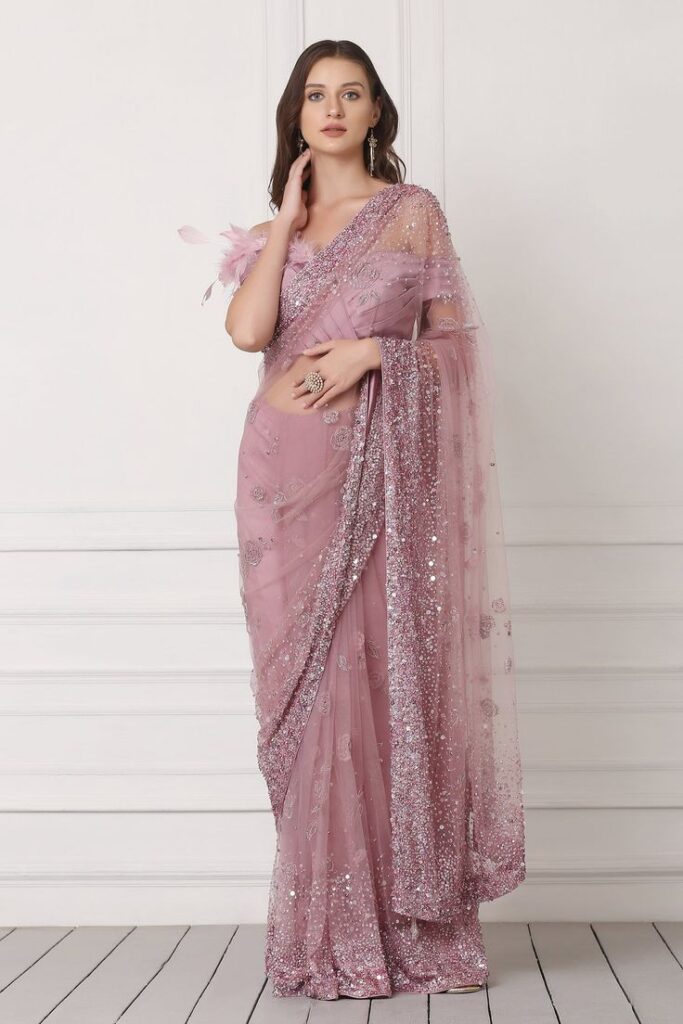
Sarees, a timeless garment worn by women across India and beyond, have captivated hearts and minds for centuries. Their elegance, versatility, and cultural significance make them a treasured possession for many. This comprehensive guide will delve into the world of sarees, exploring their various types, draping styles, accessories, and care tips.
Types of Sarees
Cotton Sarees

Known for their lightweight and breathable nature, cotton sarees are perfect for everyday wear and summer occasions. They come in a variety of colors, patterns, and weaves, offering a comfortable and stylish option.
Silk Sarees

Luxurious and elegant, silk sarees are often reserved for special occasions like weddings and festivals. They are available in different types of silk, such as Banarasi, Kanjivaram, and Tussar, each with its own unique characteristics.
Georgette Sarees

Georgette sarees are known for their flowy and delicate fabric. They are popular for parties and evening events, offering a feminine and graceful look.
Net Sarees

Net sarees are characterized by their sheer and intricate embroidery. They are often used for bridal wear and formal occasions, creating a glamorous and ethereal effect.
Banarasi Sarees

Hailing from Varanasi, India, Banarasi sarees are renowned for their intricate handloom weaving and rich embellishments. They are a symbol of luxury and tradition, often chosen for weddings and special celebrations.
Saree Draping Styles
There are numerous ways to drape a saree, each with its own unique charm. Some of the most popular styles include:
- Nivi Style: This is the most common draping style in South India. It involves pleating the saree at the front and wrapping it around the waist.
- Bengali Style: The Bengali style features a long, flowing pallu that drapes over the shoulder. It is often paired with a high-neck blouse.
- Gujarati Style: In the Gujarati style, the pallu is tucked into the waistband at the back. It is a popular choice for casual wear.
- Marathi Style: The Marathi style involves a unique way of draping the pallu over the shoulder. It is often paired with a traditional Marathi blouse.
- Indo-Western Style: Indo-western sarees combine traditional elements with modern influences. They may feature fusion designs, contemporary fabrics, or unconventional draping styles.
Saree Accessories
To complete the saree look, it’s important to choose the right accessories. Some popular options include:
- Blouses: Blouses come in various styles, from simple to elaborate. They can be made from different fabrics and can feature embellishments like embroidery or sequins.
- Jewelry: Sarees are often paired with traditional jewelry, such as necklaces, earrings, bangles, and rings. Choose jewelry that complements the color and style of your saree.
- Bags: A clutch or a small handbag can add a touch of elegance to your saree ensemble.
- Footwear: Opt for footwear that is comfortable and matches the occasion. Sandals, heels, or juttis are popular choices for sarees.
Caring for Your Saree
To ensure the longevity of your sarees, it’s important to care for them properly. Here are some tips:
- Hand wash or dry clean: Most sarees should be hand washed or dry cleaned to prevent damage.
- Avoid harsh chemicals: Use mild detergents and avoid using bleach.
- Dry in shade: Hang your saree to dry in a shady area. Avoid direct sunlight, which can fade the colors.
- Iron carefully: Use a low heat setting when ironing your saree. Avoid ironing directly on the embroidery or embellishments.
- Store properly: Fold your saree carefully and store it in a cool, dry place. Avoid hanging it for long periods, as this can stretch the fabric.
FAQs
How can I choose the right saree for my body type?
If you have a pear-shaped body, opt for sarees with a heavy border at the bottom to balance your proportions.
If you have an hourglass figure, you can wear almost any style of saree.
If you have a slender frame, consider sarees with heavy embroidery or embellishments to add volume.
What is the best way to drape a saree for beginners?
Start with the Nivi style, as it is relatively simple and easy to learn. There are many tutorials available online that can guide you through the process.
Can I wear a saree for casual occasions?
Yes, you can definitely wear a saree for casual occasions. Cotton sarees are a great option for everyday wear. You can also style a saree with a casual blouse and accessories for a more relaxed look.
How can I style a saree for a party?
For a party, choose a saree with intricate embroidery or sequins. Pair it with a stylish blouse and statement jewelry. You can also opt for a bold color or a unique pattern.
What is the best way to care for a silk saree?
Silk sarees should be dry cleaned regularly. Avoid using harsh chemicals or rubbing the fabric too vigorously. Store your silk saree in a cool, dry place, away from direct sunlight.
 Get
Get 